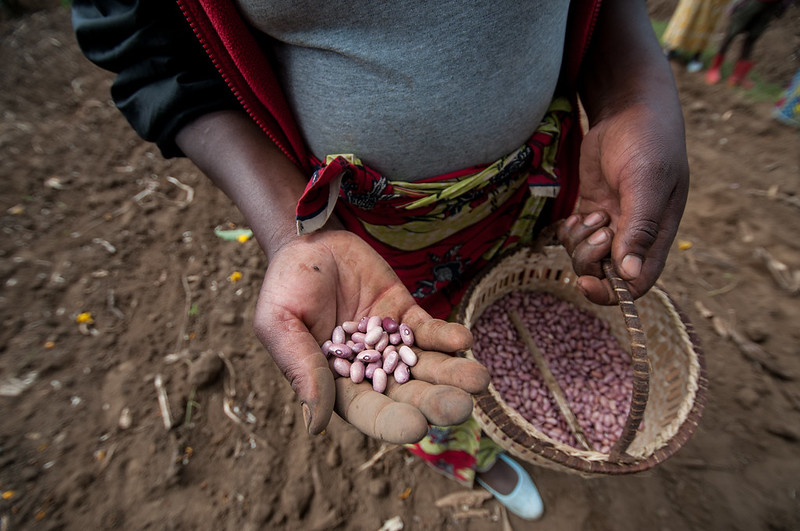Village elders in Africa played a crucial role in a global seed-collecting project that aims to bolster food security in a changing climate. Through cross-breeding common crops with their wild relatives, scientists plan to create strains that are better able to cope with higher temperatures and extreme weather.
The Crop Wild Relatives project, funded by the Norwegian government, announced its completion in December last year. Over the course of six years, it gathered 4,644 seed samples from 371 wild crop relatives in 24 countries on four continents. Many of these plants are threatened by deforestation and other pressures, and could soon be lost—along with their ability to improve their domesticated cousins.
“Increasingly, breeders are looking to crop wild relatives to find that genetic diversity, those sturdy traits that can help our food crops produce more with less water, less fertile land, less fertilisers and pesticides,” says Hannes Dempewolf, a senior scientist at the Germany-based Crop Trust, who led the initiative.
In Africa, the project targeted crops like millet, rice, eggplant, and sorghum. Researchers in Kenya, Uganda, Ethiopia, Nigeria, Ghana, and Sudan participated in the global effort. But they were greatly helped by local village elders in the often-remote collection areas, who led the researchers to the wild plants they sought.
Desterio Nyamongo, a crop scientist at the Nairobi-based Kenya Agricultural and Livestock Research Organization who participated in the project, says the information village elders held in their heads was often more accurate than the maps that his teams had brought on collecting trips. One team had to ask locals for help on the Kenyan coast, close to the border with Tanzania, when the maps they had brought failed them. The elders were able to find the plant without any difficulty, he says. “Overall, we learnt that the role of local knowledge cannot be underestimated.”
Elsewhere, local expertise informed the timing of expeditions, which had to coincide with the times when collectors would be most likely to encounter mature seeds. On occasion, that meant that the difference between collecting an elusive crop, or missing it, rested with a young shepherd and his knowledge of the local area.
The African seeds were split between local gene banks and partner banks, like the Millennium Seed Bank in the Royal Botanic Gardens, Kew in London, United Kingdom. The seeds and the data derived from them will be shared with scientists who want to use the information to create hardier commercial varieties.
Collectors also faced down significant risks to find the seeds. In Nigeria, first Boko Haram insurgencies, then severe floods hampered their efforts. Only in 2017—the penultimate year of the project—were scientists in the country able to collect seeds in all six of their target areas. In the end, the risk-taking was worth it: In Kenya, collectors found four wild eggplant relatives, none of which had previously been stored in any gene bank.
Nyamongo says the African plants will help plant scientists in Europe and America climate-proof commercial crop strains. “Climate prediction models predict that these regions will in future have near-tropical climatic conditions, [and] that [they] will need crops well adapted to higher temperatures,” he says.
But Dempewolf emphasises that the plants will also be useful for African scientists. He says the project was carried out in line with the United Nations’ Food and Agriculture Organisation’s international treaty on plant genetic resources. This treaty allows its more than 140 signatories to freely exchange genetic materials of important food crops.
Filippo Bassi, a Morocco-based plant breeder with the Lebanon-based International Centre for Agricultural Research in the Dry Areas, who also participated in the project, said that incorporating “useful genes” from wild wheat had been the key to the success of his centre’s durum wheat programme over the past 30 years. “To me the only true shield we have to protect our crops is the use of wild traits, which have grown and prospered under climatic hammering for millennia.”
Image credit: CIAT/Flickr
